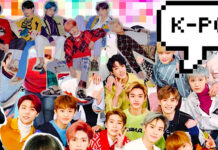As the Internet exploded recently with the story of the 14-year-old Muslim boy arrested for taking a homemade clock that was mistaken for a bomb to his school in Texas, President Obama’s small army of social media specialists wasted no time.
From their office in the Eisenhower Executive Office Building, Mr. Obama’s aides determined that the president should swiftly tweet about the clockmaker, Ahmed Mohamed, whose distraught expression and handcuffed wrists were feeding a national debate about ethnic and religious profiling.
“Cool clock, Ahmed,” Mr. Obama said in a message posted on Twitter hours later from his personal account, @POTUS, to his nearly five million followers. “Want to bring it to the White House?”
Although the president seldom posts his own tweets, and White House officials would not say who wrote the one about Ahmed, the tweet reflected a push at the White House to build up a social media presence for Mr. Obama in his own voice. The goal is to bring a sense of spontaneity and accessibility to one of the world’s most choreographed and constricted positions.

Leading the charge is Mr. Obama’s Office of Digital Strategy, a team of roughly 20 aides who spend their days managing his Twitter account and the White House Facebook page, Instagram account and YouTube channel.
Led by Jason Goldman, a 39-year-old former executive at Twitter, Blogger and Medium, the team has a variety of tasks, including live-tweeting presidential speeches in 140-character squibs from the White House Twitter account and using analytics to track which issues may be most ripe for a web video or graphic and then producing them.
More than anything else, they are looking for ways to establish a digital identity for Mr. Obama. They say the old conventions of White House communications — a major policy address, a television or newspaper interview or a written statement — are less and less effective.
“Our office is very much tasked and looking for ways to bring his voice directly to people,” said Kori Schulman, Mr. Goldman’s deputy, who has worked on the president’s digital team since 2009. “It’s a balance of focusing on the president’s priorities and being flexible and opportunistic as conversations are happening online that relate to what the president cares about.”
Technology has long been crucial to Mr. Obama’s politics. His campaign’s pioneering use of data analytics helped propel him to the White House, where he was the first president to use email and now is rarely seen without his iPad. In April, he named Mr. Goldman as the first chief digital officer, architect of the White House’s digital initiatives.
“One of the things he wanted to do was to open the White House, to pull the curtains back and show people how government works, and this was a natural progression in that,” Jennifer Psaki, the communications director, said of Mr. Obama. “He’s always coming to us and looking for ways to engage, and it is a challenging thing to do from the White House, because you’re running the country.”
 Kori Schulman, the deputy director of digital strategy for the White House, has worked on the president’s digital team since 2009. Credit Stephen Crowley/The New York Times
Kori Schulman, the deputy director of digital strategy for the White House, has worked on the president’s digital team since 2009. Credit Stephen Crowley/The New York Times
Mr. Goldman and Ms. Schulman attend communications meetings each morning in the West Wing to help figure out when Mr. Obama should insert himself into the digital mix and alert him when something is trending on Twitter or generating heavy traffic on Facebook.
In November 2013, images of Miles Scott, a 5-year-old leukemia patient dressed as Batman fighting crime in his hometown, San Francisco, sparked an Internet outpouring, and Mr. Obama’s aides thought “Batkid” should hear from the president. They used 30 seconds at the end of the weekly taping of Mr. Obama’s Saturday radio address to have him record a six-second Vine, saying: “Way to go, Miles. Way to save Gotham.”Kori Schulman, the deputy director of digital strategy for the White House, has worked on the president’s digital team since 2009. Credit Stephen Crowley/The New York Times
More recently, top officials have become more open to devoting presidential time to social media, after Mr. Obama’s digital gurus showed their colleagues with data metrics how his appearances on social media — like YouTube videos he starred in to promote themes of his State of the Union address in January — helped spread his message.
“We didn’t know what the reception for this was going to be, and it turns out that we were pretty validated,” Nathaniel Lubin, who formerly led Mr. Obama’s digital and Internet efforts, said of the State of the Union videos. “Those videos being successful has gone a long way toward demonstrating how powerful this could be as a platform for the president.”
When Mr. Obama traveled to Alaska in August to build public awareness about climate change, he took over the White House Instagram account. For several days the president wielded a GoPro camera and a selfie stick to capture receding glaciers, and shared his every picture and video as if he were just another American guy taking a spectacular summer vacation.
The reality is, of course, different. Mr. Obama’s tweets are sometimes written and almost always sent by aides. He follows only 70 accounts on Twitter, mostly government agencies, members of his cabinet and senior staff, Chicago sports teams and Bill Clinton. His spontaneous replies on digital platforms are rare.
Like the man himself, Mr. Obama’s personality on social media can sometimes veer into the dry and professorial. He particularly likes to tweet what his aides refer to as fact series, several 140-character bursts of facts and figures about an issue — like gun violence or criminal justice — he is pushing.
Increasingly, the White House is using Mr. Obama to break news over social media. His first reaction to the Supreme Court’s ruling establishing a right to same-sex marriage nationwide in June was on Twitter, where he called the decision “a big step in our march toward equality.” He added the hashtag #LoveWins, which quickly became a trending topic.
“Ultimately, what all of this is about is finding ways to communicate with people in a time when media has become so disaggregated that simply communicating through the traditional means is woefully insufficient,” said Dan Pfeiffer, Mr. Obama’s former senior adviser and an architect of his digital strategy.
Social media can also be a powerful tool for burnishing the president’s image with a sometimes-fickle public. One of the most viewed postings the White House has ever shared is a YouTube video of the president taking an impromptu stroll near the White House last year, quipping “the bear is loose” as he shook hands with awe-struck tourists.
It was a time when “we were really getting beaten up, and there was no break in the narrative,” said Mr. Pfeiffer, recalling how the rise of the Islamic State was capturing public attention. “And here we had this glimpse of the president as we all wished people could see him.”













